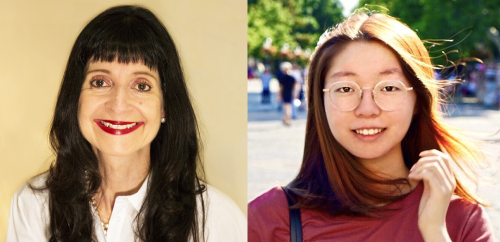Questo mese, il pubblico può schermare 38esimo Parallelo on the Planet Classroom Network. This film is curated by Planet Classroom
Ejun Hong’s 38esimo Parallelo is a powerful short film that sheds light on the decades-long division between North and South Korea. In the exclusive interview that follows with the filmmaker, Ejun delves into the captivating world of her thought-provoking film. Through a unique blend of hand-drawn 2D computer animation and powerful voiceover, Hong takes audiences on a poignant journey that explores the division and potential reunification of the Korean Peninsula. Inspired by her experiences as a student at the University of Pennsylvania, Hong sought to present diverse perspectives on this complex topic by interviewing three Korean students with varying backgrounds. The challenges of conducting the interviews during the COVID-19 pandemic added an extra layer of complexity to the process.
Il Global Ricerca per l'Educazione is pleased to welcome Ejun Hong.
What inspired you to create “38esimo Parallelo,” and what message did you hope to convey to audiences through the film’s unique animation style and powerful voiceover?’
I created 38esimo Parallelo as my final project for the 2D Computer Hand-Drawn Animation class at the University of Pennsylvania. Through this film, my intention was to portray the division of the Korean Peninsula from the perspective of Korean students. By interviewing three Korean students from different backgrounds and utilizing their voices as narration for the animation, I sought to present diverse viewpoints and provoke audience reflection on the topic of Korea’s division and reunification. Inoltre, I aimed to illustrate the societal consequences resulting from Korea’s division. Per esempio, many families were separated, unable to reunite due to strict border regulations. Inoltre, the division has led to a process of heterogeneity between South Korea and North Korea in terms of languages, valori, and cultures. Through my animation, I aimed to convey these issues and concerns stemming from the division.
How did you approach the process of interviewing the Korean students featured in the film, and what were some of the challenges or surprises you encountered during this process?
As I aimed to incorporate a diverse range of perspectives and avoid bias when addressing the issues surrounding the division and reunification of Korea, I chose to interview three Korean students from different backgrounds. The first student had lived in Korea for her entire life, the second student had attended Penn and lived and studied in both Korea and the United States, and the third student primarily resided in the United States. Once I had selected the interviewees, I devised five questions to pose to them: (1) What word comes to your mind when you think of the division of Korea? (2) How did the division of Korea affect you, your community, and society? (3) What word comes to your mind when you think of reunification? (4) Do you think reunification is necessary? e (5) What future can we, as Koreans, concepire? After conducting the interviews and recording their responses, I proceeded to rearrange the recordings to create the narration for the animation.
One of the challenges I encountered during the process was a technical issue. Since one of the interviewees was in Korea and conducting in-person interviews wasn’t feasible for others due to COVID-19 restrictions, I had to find the most effective way to obtain high-quality recordings. Pertanto, I utilized Zoom recording and phone recorders, providing recording instructions to the interviewees to ensure the recordings were of high quality for the narration of the animation.
Another challenge I faced was presenting different opinions and perspectives of the students without biases. As my aim was to convey a wide range of perspectives that would encourage the audience to think critically about the topic, I sought to minimize bias in my approach. To achieve this, I carefully selected three students from diverse backgrounds and experiences to ensure a variety of answers. Inoltre, I avoided asking questions that would steer the interviewees in a specific direction. Invece, I posed open-ended and abstract questions that could also assist me in creating an animation based on the narration.
In light of recent developments in North and South Korea, do you feel that the message of the film is still relevant today? Se è così, how do you think it can contribute to ongoing discussions about reunification and other related issues?
As this film aims to raise questions about the issues surrounding the division and reunification of Korea and foster critical thinking among the public, I firmly believe that its message remains relevant today. By reflecting different perspectives, the film has the potential to contribute to ongoing discussions about reunification by encouraging individuals to consider both sides of the arguments.
The hand-drawn 2D computer-animations in the film are particularly striking and unique. Can you talk a bit about the process of creating these animations and how you worked to ensure they complemented the overall tone and message of the film?
To effectively depict the division of Korea through animation, I opted to set the story along the 38th Parallel, the military boundary that divides the Korean Peninsula. In the animation, the character navigates the path forged by the 38th Parallel. Inoltre, I made the creative decision to employ a style that juxtaposes traditional Asian art with modern-day imagery. Di conseguenza,, the animation’s style, including its color and texture, drew inspiration from traditional Korean art.
Thank you Ejun!
C.M. Rubin and Ejun Hong
Da non perdere 38esimo Parallelo, now streaming on the Planet Classroom Network. This film is curated by Planet Classroom.
Questo film è curato da Planet Classroom.







Commenti recenti